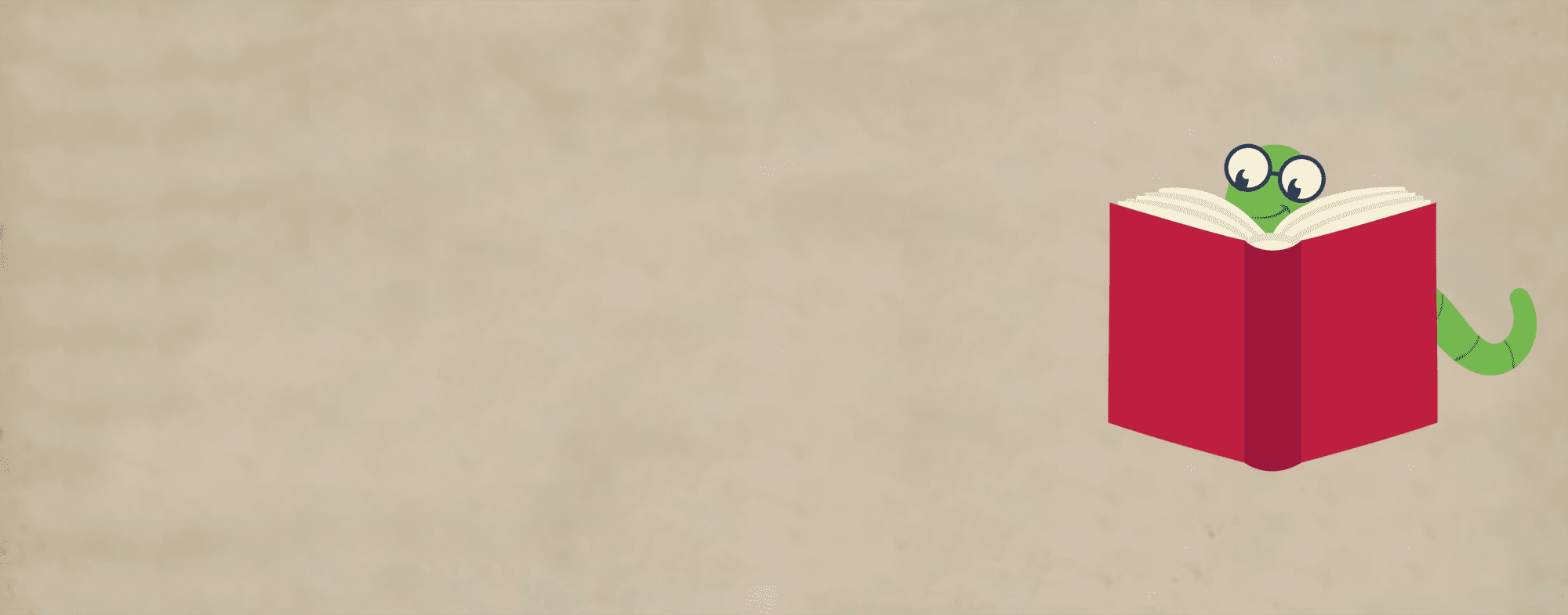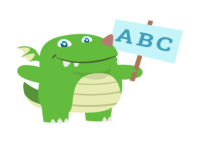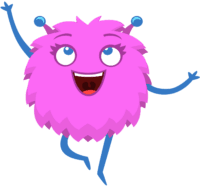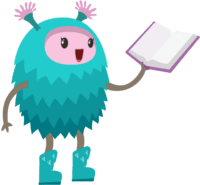
Online Elementary School Program
Virtual Preparatory Academy of West Virginia
Online Elementary School: Grades K-5
The online elementary school program at Virtual Preparatory Academy of West Virginia is tuition-free. We designed our West Virginia-approved online elementary school program with your child’s success in mind. We offer online public-school education for first, second, third, fourth, and fifth grade in our online elementary school curriculum.
Supported by state-licensed teachers, Virtual Preparatory Academy of West Virginia’s online elementary school program uses interactive course materials and videos. We strive to provide a relevant, engaging, and challenging curriculum that is developmentally appropriate, meets their individual needs, and prepares students for middle school.
The elementary school years prepare students by teaching them vital subjects, such as reading, science, and mathematics. During these formative years, they also develop critical thinking skills, learn to solve problems, understand abstract ideas, and develop time management skills that will help lay the foundation for future success.
* Course offerings are subject to change and may vary based on school staffing.




Curriculum, K-5
LANGUAGE ARTS
This Kindergarten Language Arts course will teach students to identify and write all letters, produce letter sounds, and master frequently used phonograms. Students will also learn weekly sight words and reading and comprehension strategies to grow as readers. This course meets all Common Core Kindergarten Language Arts standards.
MATH
During the first semester, students will learn foundational math facts. They will learn ordinal numbers, counting to 12, comparing sizes, and putting items in order. Students will learn the number line and its uses, basic measurements such as inches and feet, and how to tell time on digital and analog clocks.
In the second semester, students learn to count to twenty, compare objects using the terms tall, longer, and shorter, and compare two objects using the terms lighter and heavier. They will continue exploring basic geometric shapes such as cones and spheres and working with concepts like first, middle, and last.
SCIENCE
Students in this course will use their senses to explore their world. They will experience nature walks, gardening, and imitative games while exploring varying concepts.
SOCIAL STUDIES
In this course, students begin exploring their place in the community and the responsibilities of being a member of society. In the first semester, students will focus on learning about significant figures in U.S. history, including Pocahontas, George Washington, and Abraham Lincoln.
In the second semester, students will learn map reading skills. They will discover how to read maps of the U.S. and the world. Students learn lifelong map skills, from location to water representation and floor plans.
LANGUAGE ARTS
This 1st grade Language Arts course will teach students to identify and write all letters, produce letter sounds, and master frequently used phonograms. Students will also learn weekly sight words and reading and comprehension strategies to grow as readers. This course meets all Common Core 1 LA standards.
MATH
During the first semester, students will build fluency with basic math facts. They will learn to count to 100, basic addition and subtraction facts, and how to add double-digit numbers. Students will learn word problems, Venn diagrams, and basic geometric concepts.
Students will begin counting by twos, fives, and tens during the second semester. They will learn vertical addition and subtraction, multiplication, division, and the signs used in those operations. They will study even and odd numbers.
SCIENCE
Students in this course will complete projects designed to allow for exploration and discovery. Students investigate their environments and, through observations of the natural world, conduct studies on topics related to their healthy development.
SOCIAL STUDIES
In the first semester, students explore the fundamentals of social studies, including map skills and cardinal directions. They will examine maps of the U.S. and the globe. Students will also learn about significant figures from American history, such as Pocahontas, George Washington, Abraham Lincoln, and Clara Barton.
The second semester focuses on introductory economics. Students will study bartering, goods and services, jobs in the community, and how the marketplace works.
LANGUAGE ARTS
The 2nd grade Language Arts course will teach students to spell and write vocabulary, read more fluently, apply grammar concepts, and participate in handwriting and writing activities through thematic units. Students will also continue to master weekly sight words and reading and comprehension strategies to grow as readers. This course meets all Common Core 2 LA standards.
MATH
During the first semester, students will build fluency with basic math facts. Using strategic methods, they will learn to add and subtract within 100 to solve word problems. Students will also manipulate numbers to 1000 using knowledge of hundreds, tens, and ones. Lastly, students will demonstrate arrays with repeated addition.
During the second semester, students will apply place value concepts to add and subtract within 1000. They will also estimate and solve word problems, demonstrating their mathematical skills. Students will measure and compare lengths and represent them on a number line. They will work with money and time to compare value. Students will gather information and present it in graphical form and then analyze and discuss the data. Lastly, they will recognize common 2-dimensional and 3-dimensional shapes by specific characteristics.
SCIENCE
2nd grade Science introduces students to the process of observation and its importance in studying science. They will learn to identify their five senses and why they are critical to observation. Students will use these observation skills throughout the course to examine many different types of animals and their environments. They will observe ants in their environments and learn the different bird types. Students will study plant and animal rhythms and perform small experiments with plants. Students will explore the relationship between nature and humanity through storytelling. They will continue to learn about animals and their characteristics, habitats, and needs.
SOCIAL STUDIES
This course explores the fundamentals of social studies, including culture, geography, and economics. Students will study the Ancient Cultures of China, Africa, and the Celts through ancient folk tales and fables. They will create a photo book describing significant events in their own lives. They will also examine the importance of geography and direction. Students will learn to locate boundaries using a world map and identify the places discussed in the previous lessons, including Africa, China, and the British Isles.
LANGUAGE ARTS
This 3rd grade Language Arts course will teach students reading comprehension skills and strategies to help them become stronger readers. Students will also master weekly spelling vocabulary words and grammar concepts that will enable them to become stronger writers. This course meets all Common Core Third Grade LA standards.
MATH
During the first semester, students will develop flexibility with numbers as they master addition, subtraction, multiplication, and division. Students will study relationships between addition and subtraction, multiplication and addition, and multiplication and division as they learn to borrow, carry, and regroup to find sums and differences of two whole numbers up to 10,000. Students will learn the place value of base ten numbers up to 1,000,000 to find patterns and make estimations. Lastly, they will implement a 4-step approach to solving problems and express numbers differently, translating them into Roman numerals or ordinal numbers.
During the second semester, students will explore concepts of linear measurement, weight, volume, temperature, and time. They will also recognize, compare, and convert fractions. Students will write amounts of money and make change using as few coins as possible. Lastly, students will learn basic geometry concepts, including lines, polygons, and solid figures.
SCIENCE
3rd grade Science introduces students to experimentation as they journey through the Earth and its many miracles. They will begin learning about the Earth, the sun, and the moon. By participating in simple experiments, students will explore the water cycle, gravity, the weather and its patterns, various types of terrain, and the role of plants in oxygen production and their importance to human survival. Students will expand their knowledge through videos, pictures, short readings, projects, and hands-on experiments.
SOCIAL STUDIES
Students will begin to explore the fundamentals of social studies, including geography, civics, and economics. They will study the beginnings of civilization and examine ancient Hebrew society, the Phoenicians, and the Kush tribe of ancient Africa. They will explore the Native American tribes of the Cherokee, Sioux, and Hopi. Students will also explore the first explorers of the Americas and learn about the early history of the United States. In the first semester, students will learn noteworthy geographical factors in the ancient civilizations, Native American tribes, and the developing United States. Students will increase their skills by creating maps and looking at the landscapes. They will closely examine their heritage by mapping their ancestry.
LANGUAGE ARTS
4th grade Language Arts integrates reading, writing, speaking, listening, vocabulary, and grammar to engage and support students in building a broad and diverse set of literacy skills. The course covers classic and contemporary forms of literature, including media and multimedia products. Writing assignments in semester A focus on narrative and persuasive modes and emphasize the use of reasoning and details to support opinions. Each writing assignment spans several lessons and guides students through a process that begins with prewriting and ends by emphasizing one or more aspects of conventions of standard written English. Students also learn how to participate in collaborative discussions and peer review sessions. In each lesson, engaging and relevant models and step-by-step instruction guide students toward mastering and appreciating 21st-century communication in all its forms and functions.
MATH
4th grade math uses various instructional materials to reinforce and teach new math skills. Instruction includes creative videos, mathematical storytelling, practical math applications, and repetition to reinforce skills throughout the course. Students will gain a firm grasp of three focused content areas in this course. The first is understanding and fluency with multi-digit multiplication and knowledge of dividing to find quotients involving multi-digit dividends. The second is understanding fraction equivalence, addition and subtraction of fractions with like denominators, and multiplication of fractions with whole numbers. Semester B will address the third.
SCIENCE
4th grade Science focuses on the three main scientific domains: physical, life, and earth and space science. Students will use various experiments, including field studies, systematic observations, models, and controlled experiences. The course begins with an explanation of the scientific method, which the students will continue to use and build upon throughout the course. They will examine Earth’s big picture and review the life on the planet, salt and freshwater, and fast and slow changes that occur on the planet. Students go beyond planet Earth as they study galaxies, the solar system, and other planets. They will examine how to measure forces and motion and how a single kind of matter can exist as a solid, liquid, or gas. The course uses many modes of instruction, including video presentations, enrichment activities, and hands-on experimentation.
SOCIAL STUDIES
Students will use their understanding of social studies skills to explore their local states and communities. They will start the course by studying the topography of their area and creating a detailed landscape model.
This hands-on project will require students to research their communities. Students will also study local animals and gain knowledge of local Native American traditions in their part of the country. This course walks students through the research and report writing steps vital to continuing social studies. They will focus on their states as they do projects based on local geography, state capitals, and nearby natural wonders and landforms. The semester concludes with an introduction to colonial history.
Semester B Social Studies picks up where Semester A left off by digging deeper into the frontier life of the early American settlers. Students examine the difficulties that early settlers faced when reaching America. They apply knowledge of historical thinking, chronology, turning points, individuals, and local and United States history themes to understand how history has shaped the present and will shape the future. They will continue to focus on local history by doing research projects on settlers from their particular states and how their state became a part of the Union.
LANGUAGE ARTS
5th grade Language Arts integrates reading, writing, speaking, listening, vocabulary, and grammar to engage and support students in building a broad and diverse set of literacy skills. Students study classic literature and more contemporary forms, including media and multimedia products. Writing assignments in semester A focus on narrative and persuasive modes and emphasize the use of reasoning and details to support opinions. Each writing assignment spans several lessons and guides students through a process that begins with prewriting and ends by emphasizing one or more aspects of conventions of standard written English. Students will learn how to participate in collaborative discussions and peer review sessions. In each lesson, engaging and relevant models and step-by-step instruction guide students toward mastering and appreciating 21st-century communication in all its forms and functions.
MATH
Students will learn various math topics in this course through hands-on activities, interactive lessons, and practical applications. The course will focus on several critical areas, including but not limited to developing fluency with addition, subtraction, multiplication, and division of fractions. Students will learn to extend division to 2-digit divisors, integrate decimal fractions into the place value system, and increase an understanding of operations with decimals to hundredths. They will develop fluency with whole numbers and decimal operations. The semester begins with operations and expressions, moves into decimals and money, and ends with more work on fractions. Students will gain valuable skills as they carry out activities throughout the semester that model real-life situations like grocery shopping.
Semester B continues with the study of fractions. The first lesson focuses on ratios and challenges students to solve word problems using fractions and percentages in practical life situations. They will continue strengthening their math skills by studying mixed and fraction products, fraction applications, models, and division. The third critical area students will focus on is volume.
SCIENCE
5th grade science continues to build on the skills obtained in previous years. There will be an emphasis on Earth, space, life, and physical science. Students will begin the course by focusing on Earth and space science by looking at the solar system and planets. They will learn the concept of the Earth as a sphere and its place in the solar system. The course focuses on physical science and the tools that measure force, time, and distance. They will study how light and sound travel and interact with each other and the different types of energy. The semester concludes with a look into life science and how organisms are interconnected. Instruction will include real-life applications, hands-on projects and assessments, and video and short research projects.
Semester B emphasizes life science and focuses on the Earth’s many ecosystems and how all parts of ecosystems depend on each other. Students will learn about the various types of ecosystems that exist. They will learn that ecosystems change and how they affect their ability to support their populations. The course will examine plants, their structures, and how they allow them to respond to different needs. Students will discover the importance of good nutrition to all living organisms. The course concludes with a look into the scientific process and the significance of investigations and conclusions in scientific study.
SOCIAL STUDIES
5th grade Social Studies combines the study of United States History through the Civil War with a geographical exploration of the United States. Students will use social studies skills and concepts as they study the development of the United States. The first semester begins with the early settlements of North America. It takes an in-depth look at what life was like for colonists and Native Americans. Students will learn the causes of the Revolutionary War and the people who played a significant role in it. The semester ends with students examining the new nation and what life was like for European immigrants and those on the frontier.
Semester B begins exploring the West and what life was like for those looking to find gold. Students will analyze slavery and what led to the Civil War. The course then departs from American history. From the past to the present, it delves into the geography, people, and cultures of the United States. Students will explore the country region by region and appreciate all it offers. Students will conclude the course by planning and describing a trip they would like to take to a particular place within the 50 United States. They will take a hands-on approach as they get to know their country’s geography, climate, and culture.
- Keyboarding – Semester
- Art – Semester
- Music – All Year
- Physical Education– All Year
- Health – All Year
Request Information
Fill out the form to receive more information about our school